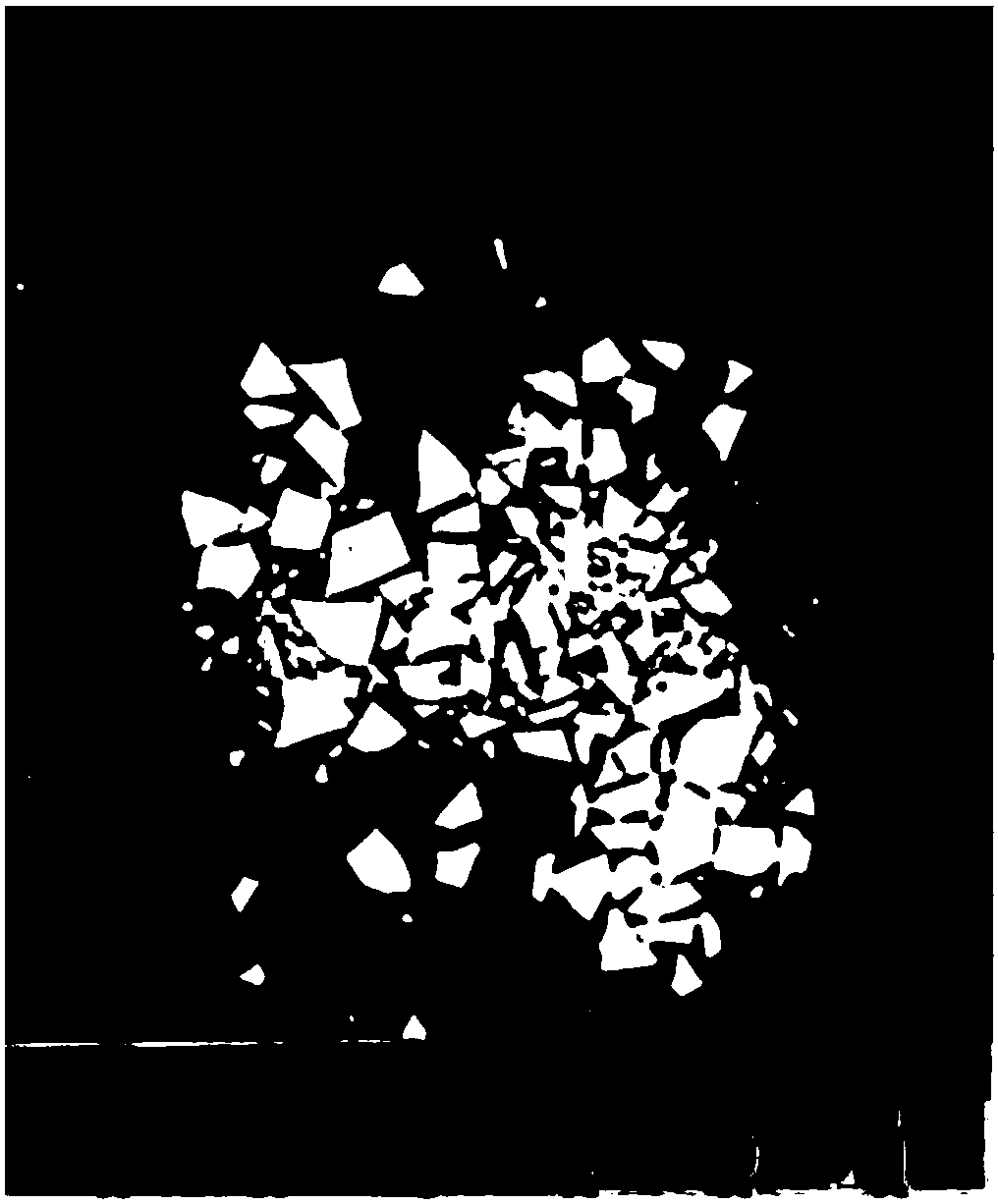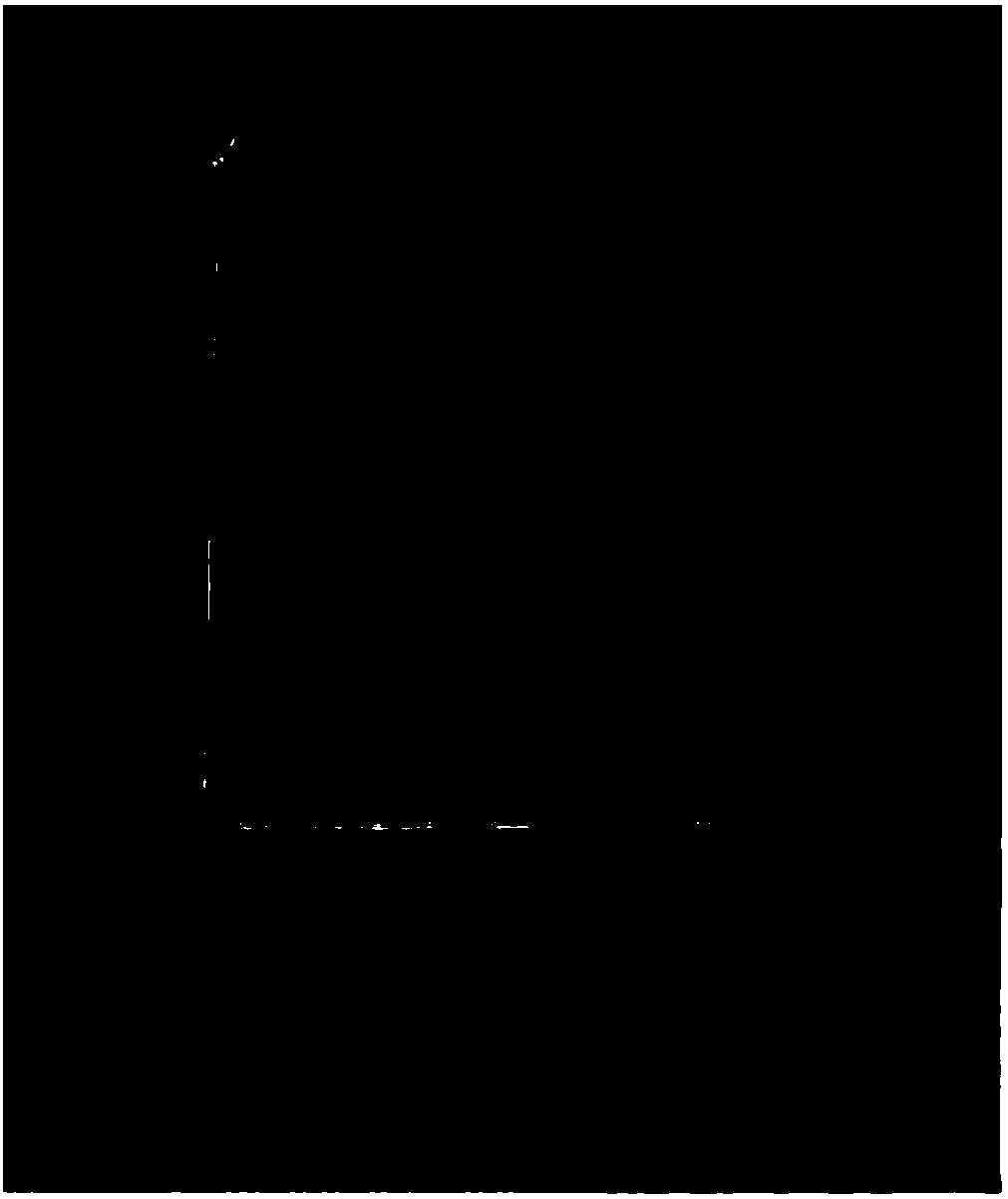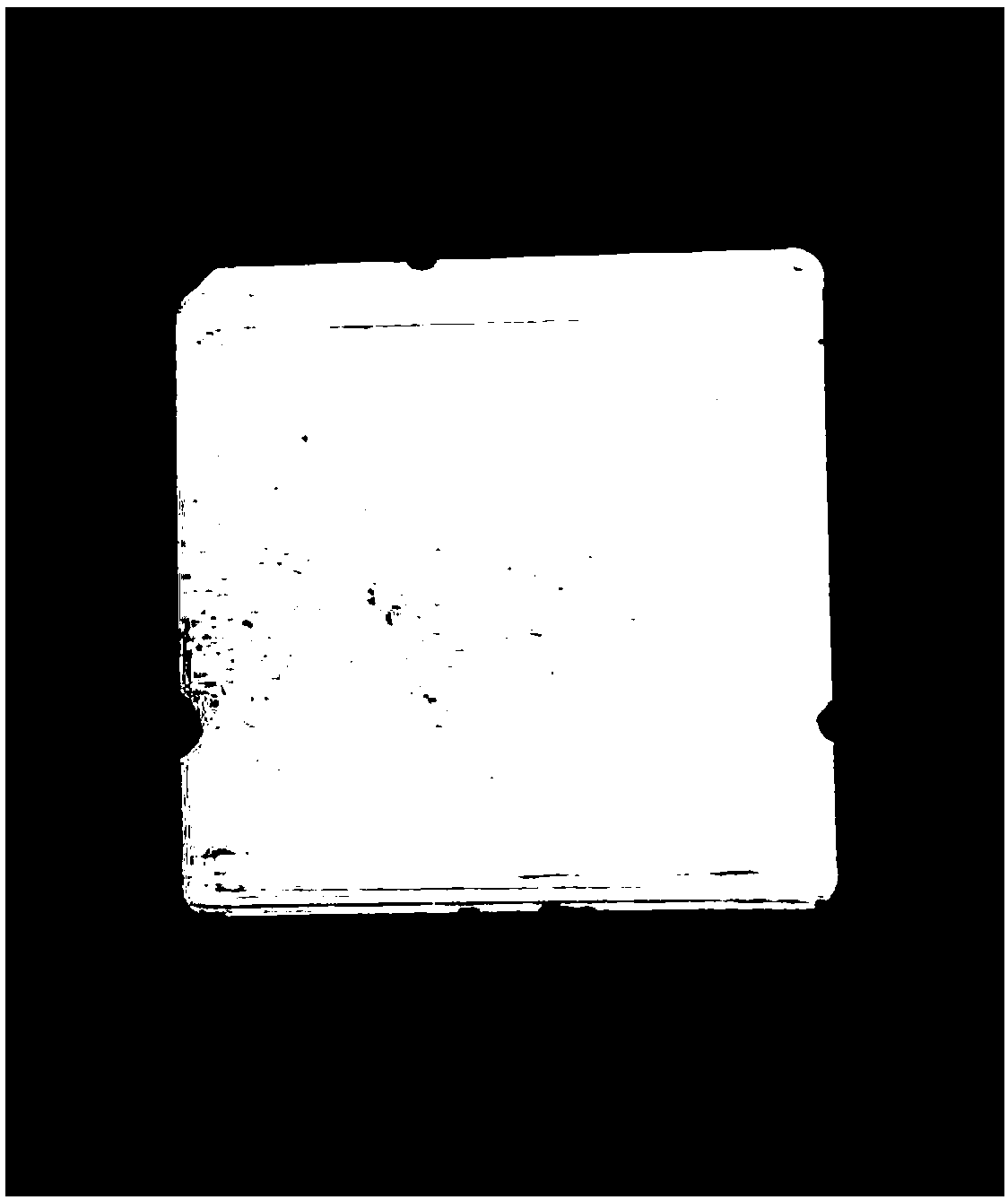Preparation method of microsphere accumulation type polystyrene porous material
A technology of polystyrene and porous polystyrene, which is applied in the field of preparation of microsphere-packed polystyrene porous materials, can solve the problems of high manufacturing cost of CMPs and PIMs, poor chemical stability of COFs, and low regularity of micropore network , to achieve the effect of easy industrial mass production and application, low cost and low equipment requirements
- Summary
- Abstract
- Description
- Claims
- Application Information
AI Technical Summary
Problems solved by technology
Method used
Image
Examples
example 1
[0033] 1. Preparation of Polystyrene Microspheres
[0034] Weigh 10 g of styrene monomer; 2.587 g of dimethyl diallyl ammonium chloride (DMDAAC); 0.173 g of azobisisobutyronitrile (AIBN); 0.5 g of polyvinylpyrrolidone (PVP); divinylbenzene (DVB ) is 0.125 g of crosslinking agent; 140 ml of absolute ethanol and 5.4 ml of deionized water are configured as solvents, and kept at 75° C. for 24 hours to prepare polystyrene microspheres.
[0035] 2. Preparation of polystyrene materials by microsphere packing method
[0036] Mix polystyrene microspheres with an appropriate amount of polyacrylic acid (microsphere mass:acrylic acid mass=1:0.01) in deionized water, and pour the mixture into a flat and clean container for accumulation. After the microspheres settle, the solvent evaporates naturally. polystyrene material.
[0037] 3. Preparation of polystyrene porous material
[0038] Add polystyrene film, anhydrous ferric chloride, and dimethoxymethane (FDA) to 1.2-dichloroethane (1g s...
example 2
[0040] 1. Preparation of Polystyrene Microspheres
[0041] Weigh 10 g of styrene monomer; 2.587 g of dimethyl diallyl ammonium chloride (DMDAAC); 0.7 g of dibenzoyl peroxide; 0.5 g of polyvinylpyrrolidone (PVP); 0.125 g of the joint agent; 140 ml of absolute ethanol and 5.4 ml of deionized water were configured as solvents, and kept at 75° C. for 24 hours to prepare Poly(St-DMDAAC) microspheres.
[0042] 2. Preparation of polystyrene materials by microsphere packing method
[0043] Mix polystyrene microspheres with an appropriate amount of polyacrylic acid (5% of the mass of the microspheres) in ethanol-water (alcohol-water ratio is 1:9) solvent, pour the mixture into a flat and clean container for accumulation, and wait until microspheres The ball settles, the solvent evaporates naturally, and polystyrene material is obtained.
[0044] 3. Preparation of polystyrene porous material
[0045] Add polystyrene film, anhydrous ferric chloride, and dimethoxymethane (FDA) to 1.2-d...
example 3
[0047] 1. Preparation of Polystyrene Microspheres
[0048] Weigh 10 g of styrene monomer; 2.587 g of dimethyl diallyl ammonium chloride (DMDAAC); 0.5 g of potassium persulfate; 0.5 g of polyvinylpyrrolidone (PVP); 0.125 g of divinylbenzene (DVB) as crosslinking agent g: 140ml of absolute ethanol and 5.4ml of deionized water were configured as solvents, and kept at 75°C for 24h to prepare polystyrene microspheres.
[0049] 2. Preparation of polystyrene materials by microsphere packing method
[0050] Mix the prepared Poly(St-DMDAAC) microspheres with an appropriate amount of polyacrylic acid (10% of the mass of the microspheres) in ethanol-water (alcohol-water ratio is 4; 6) solvent, and pour the mixture into a flat and clean Stack in the container, wait for the microspheres to settle, and the solvent evaporates naturally to obtain polystyrene material.
[0051] 3. Preparation of polystyrene porous material.
[0052] Add polystyrene film, anhydrous ferric chloride, and dimet...
PUM
| Property | Measurement | Unit |
|---|---|---|
| particle diameter | aaaaa | aaaaa |
Abstract
Description
Claims
Application Information
 Login to View More
Login to View More - R&D
- Intellectual Property
- Life Sciences
- Materials
- Tech Scout
- Unparalleled Data Quality
- Higher Quality Content
- 60% Fewer Hallucinations
Browse by: Latest US Patents, China's latest patents, Technical Efficacy Thesaurus, Application Domain, Technology Topic, Popular Technical Reports.
© 2025 PatSnap. All rights reserved.Legal|Privacy policy|Modern Slavery Act Transparency Statement|Sitemap|About US| Contact US: help@patsnap.com



